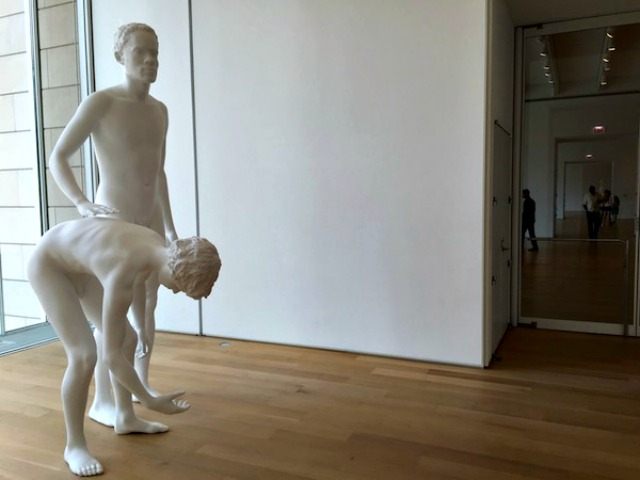In a whimpering column for vulture.com, Jerry Saltz, an art critic who writes for New York Magazine, says the new Whitney Museum of American Art “will be marked by an invisible original sin that can’t be lifted. That sin? An aesthetic one that perfectly mirrors America’s hysteria and mania around race …”
What piece of art catalyzed Saltz’s own hysteria? A sculpture the Whitney commissioned from American artist Charles Ray, then later declined to display: the sculpture of two figures, titled Huck and Jim, is designed to represent the Huck and Jim from Mark Twain’s The Adventures of Huckleberry Finn.
Although the Whitney simply stated the reason for its rejection of the work was that it would “offend non-museum going visitors,” Saltz, dissatisfied and resorting to leftist race memes, insists that the real reason stems from the museum’s own racial inadequacies. He wrote, “The proposed work, since made and exhibited in Chicago’s Art Institute, is not only a 21st-century sculptural masterpiece, it embodies so much of America’s past and current struggles that had it been placed in the front of this museum at this time, it might have been a beacon, a lightning rod, a second Statue of Liberty.”
Both figures are naked, as Huck admits in the book that they were often naked, although what Huck meant by naked is open to question. Jim, who is black, is nine feet tall, behind Huck, who is bent over in front of him.
Saltz references the book, stating, “As told by Twain, Huck is escaping but looking for adventure and fun. He’s no angel. All during the book, we read of how he wrestles with his conscience, thinking that the legally and morally right thing to do is to return this piece of property to its rightful owner. By the story’s end, Huck deigns to let Jim go because, as he puts it, “I knowed he was white inside.’ Thus, Huck is the hero of the book, Jim the cause of his heroism and redemption.”
Well, we can’t have that, can we? Of course not. Saltz is delighted at the supposed twist Ray created: “This is not Huck’s story any longer. It is Jim’s. Or whatever version of Jim’s story could be truly authored by a white sculptor.”
Yup, those whites certainly have no right to comment on the black experience.
How should Huck be seen? Like this: “In this geography of the damned, Huck is the Pontius Pilate; someone who ‘washes his hands’ of someone else’s fate even as this tragic act binds his fate to that of the other.”
As art critics must, Saltz focuses on genitalia: “And then there is the second kind of in-betweenness at work. The standing man is black; the stooping boy is white; the man’s genitals are large and uncircumcised; the boy’s penis is small and without pubic hair.”
Segueing, “Sexual racial tension is old in America, and deep,” Saltz quotes a 1948 essay which refers to the “shackling cliché” of “the white man’s sexual envy of the Negro male” and the underlying fear, “white America’s nightmare that someday … he will be rejected.”
Saltz concludes, “Other than the operatic scale, there’s no romanticizing of subject, no nostalgia, sentimentalizing, myth, or fantasy. No pallative parable or moral. Just the bare facts. This is a glyph for the complexities of reality. Twain’s tale was set in 1853; Ray’s story is set in an eternal present and is nonfiction. Here, in Wallace Stevens’s words, it’s ‘a constant cry against an old order.’”
Saltz may have certain feelings of inadequacy and guilt that cause him to focus on race, but he might want to consider that the sculpture may offend people for other reasons. But to the race-obsessed left, nothing but a racial explanation will do.

COMMENTS
Please let us know if you're having issues with commenting.